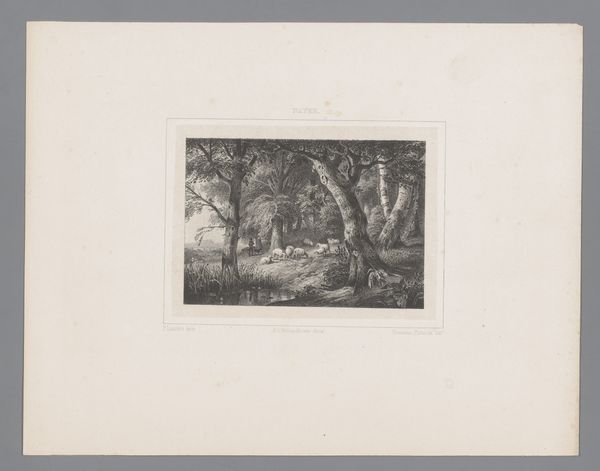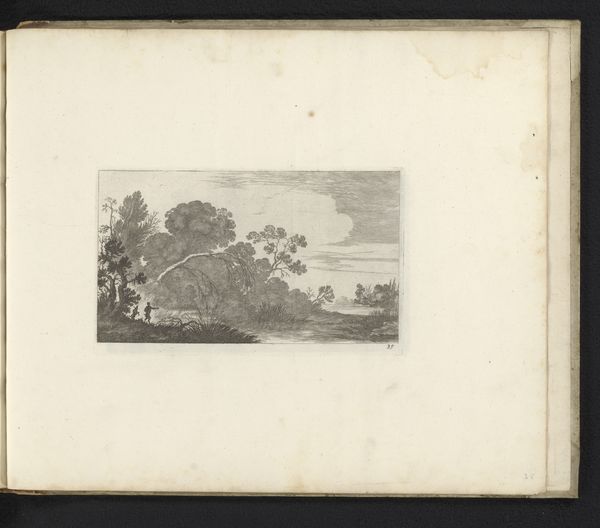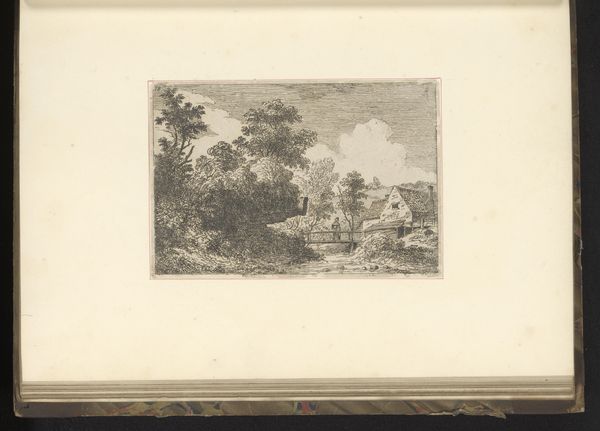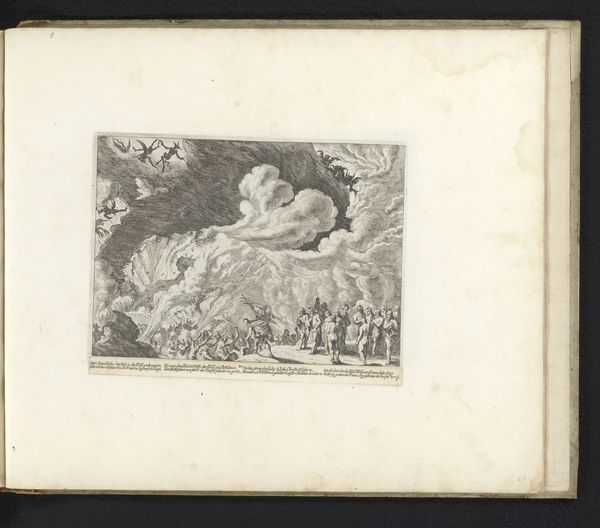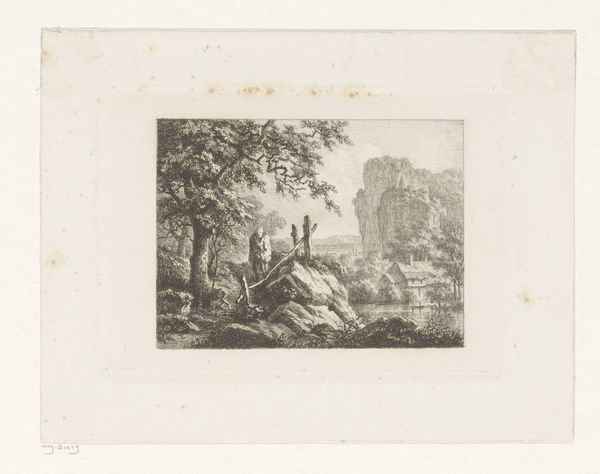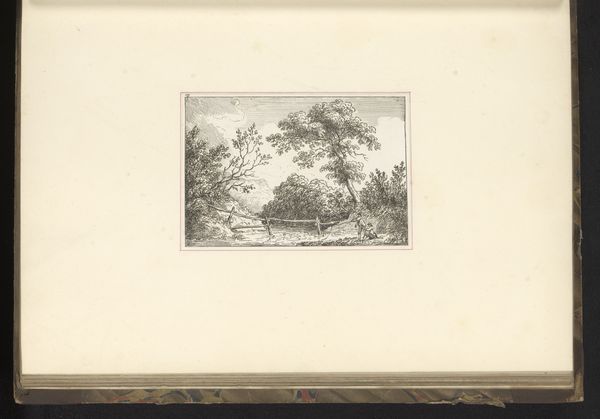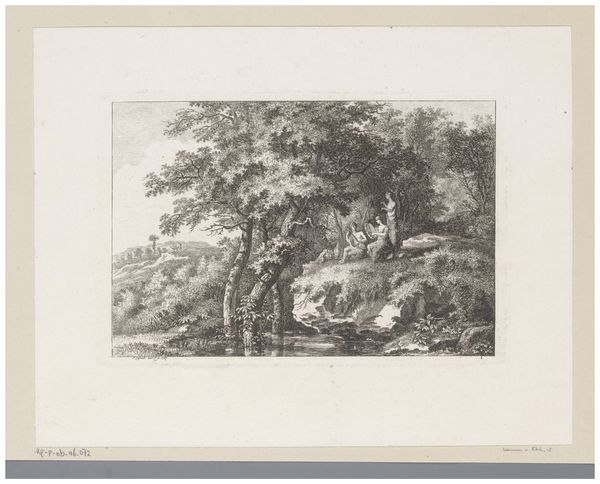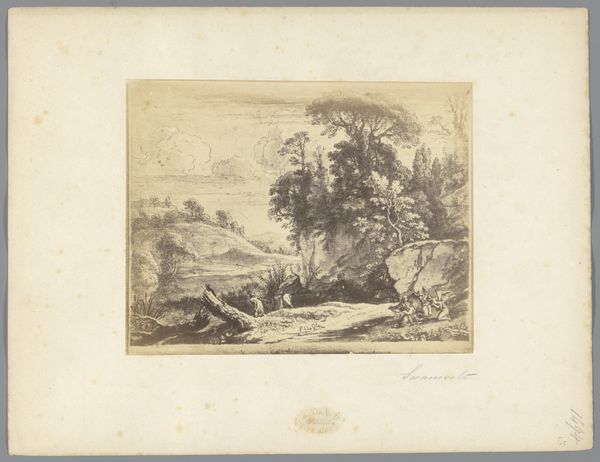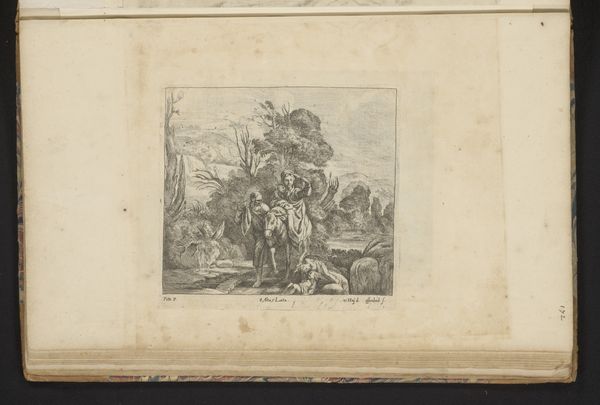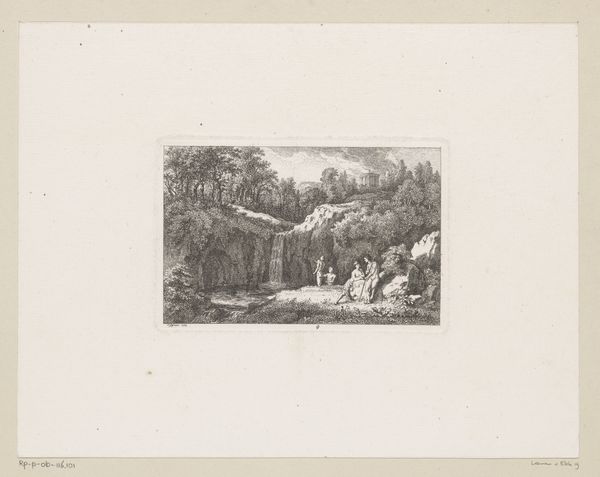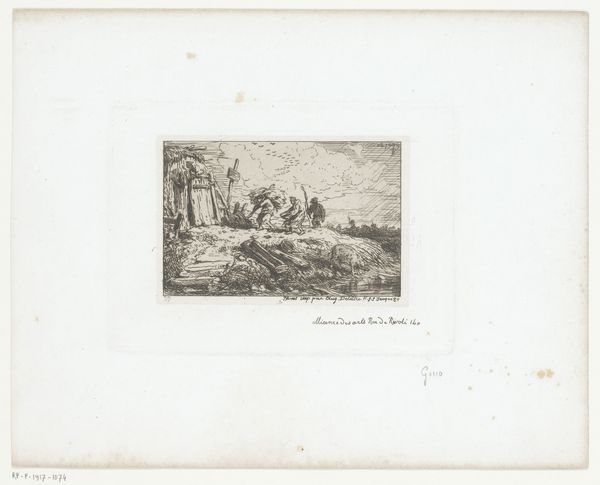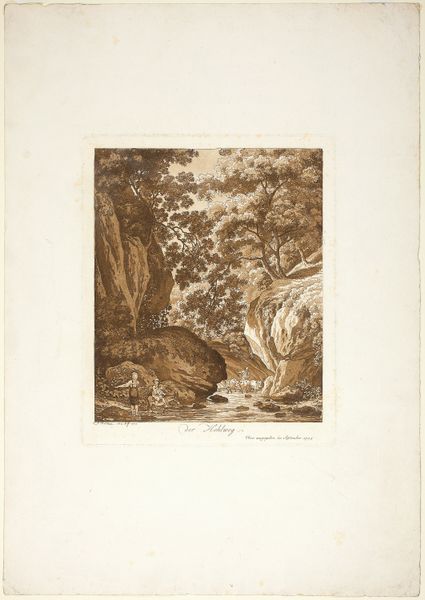
print, engraving
#
baroque
# print
#
landscape
#
engraving
Dimensions: height 156 mm, width 205 mm
Copyright: Rijks Museum: Open Domain
Melchior Küsel made this print, Vlucht naar Egypte, using etching techniques sometime in the 17th century. Etching involves covering a metal plate with a waxy, acid-resistant substance called a 'ground,' then drawing an image into that ground with a pointed needle. When the plate is immersed in acid, the exposed lines are eaten away, creating grooves. Ink is then applied to the plate, filling these grooves, and the surface is wiped clean. Finally, the plate is pressed onto paper, transferring the ink and creating the print. The process allows for fine, detailed lines. The image is characterized by contrasts in light and shadow, as well as tonal gradations. It evokes a sense of depth and atmosphere. The labor-intensive nature of etching also contributed to its cultural value, distinguishing it from mass-produced images. In understanding this artwork, the material, the making and the context all come into play. This challenges the traditional distinctions between fine art and craft.
Comments
No comments
Be the first to comment and join the conversation on the ultimate creative platform.
